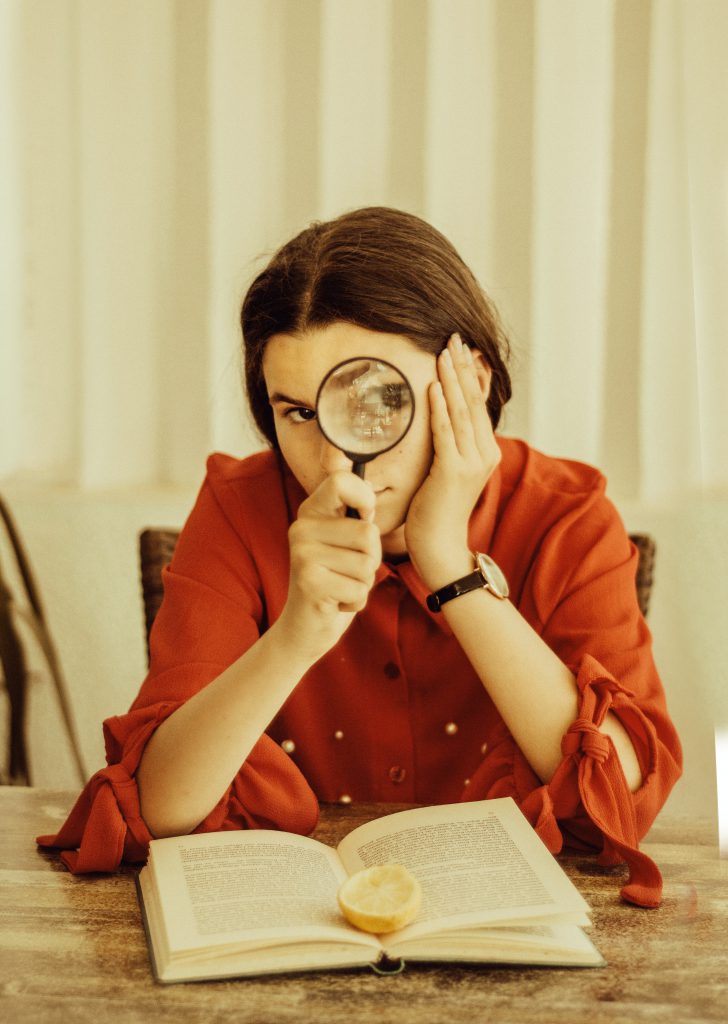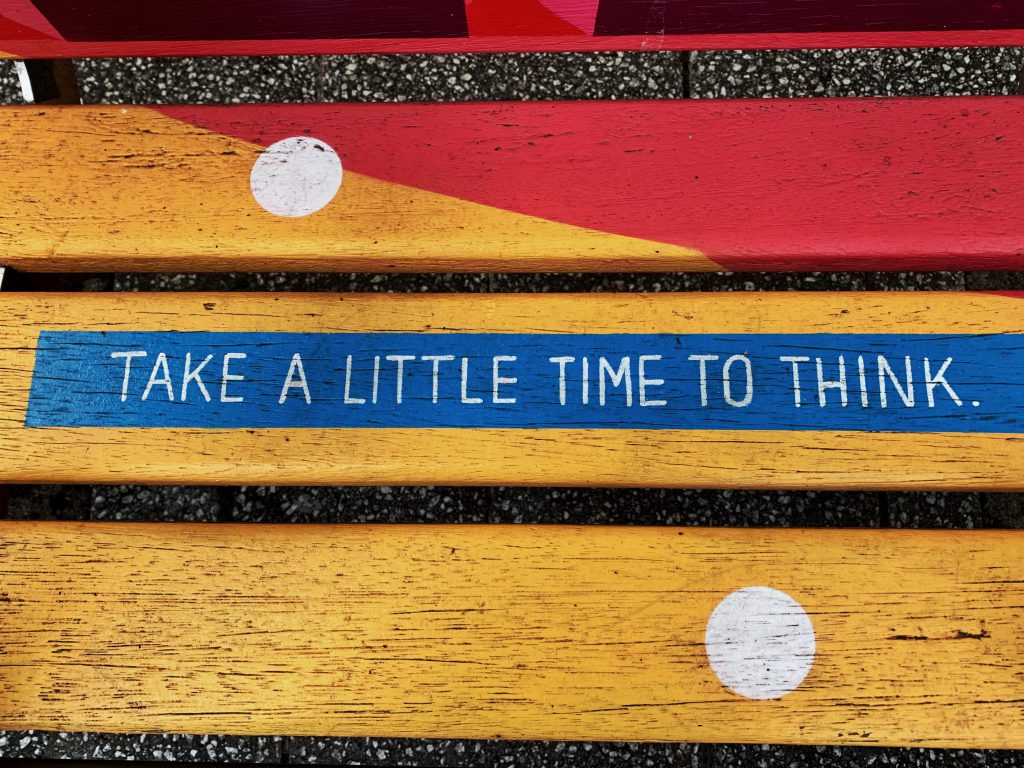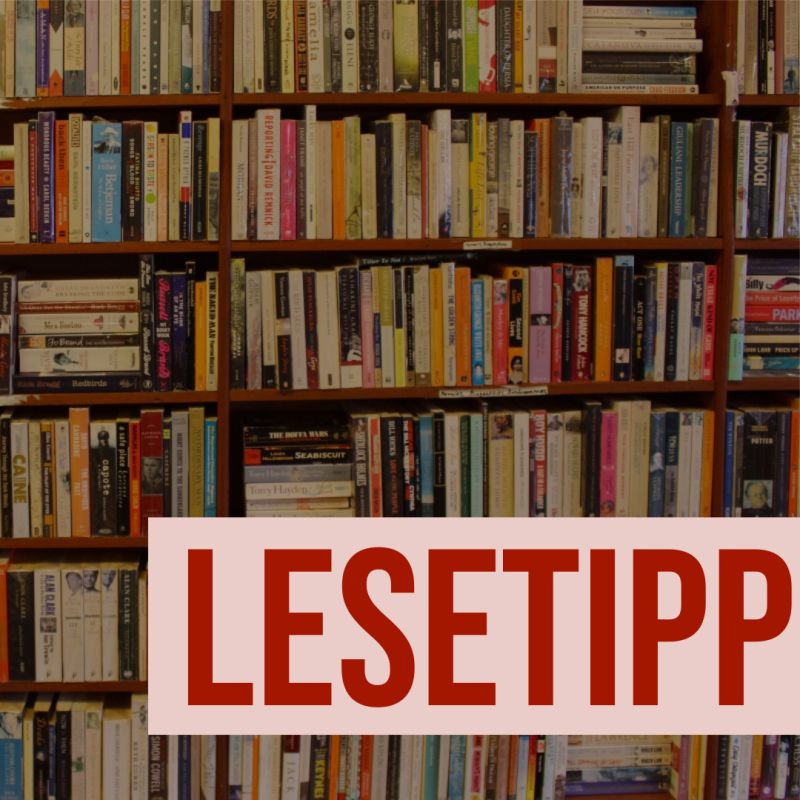
Suggestions for organising one’s own learning
„He who knows nothing must believe everything,“ Maria Ebner-Eschenbach aptly put it. Knowledge is an important resource for self-empowerment. It is the basis for being effective in our professional (and trade union) contexts. How can we encourage learners to become active lifelong learners and take „ownership“ of their knowledge? Curious?
What is knowledge management?
The term „knowledge management“ is familiar to most people. We generally think of processes that organisations have developed to ensure the preservation of knowledge and to make it accessible long-term to everyone, or to prevent the loss of knowledge.
„An investment in knowledge still yields the best interest,“ Benjamin Franklin once said, and this applies not only to organisations but to each and every one of us. It makes sense to consider how I handle this valuable resource and how I can best nurture, care for and develop it. At a time when different forms of e-learning are becoming more and more important, the question of how learners organise their knowledge is an essential one. E-learning relies on the ability of learners to manage their own learning processes. The ability to organise knowledge and reflect on learning experiences increases the quality of the learning process. If learners develop a system to organise their knowledge, the likelihood that they will use and develop it outside the seminar increases. Personal knowledge management is thus an important key to strengthening the sustainability of learning processes.
I described in detail how learning happens in #dimi_03. The essential thing is: learning is a permanent state that we carry out consciously or unconsciously in everyday life. It is no secret that only a small part of our personal knowledge is acquired in formal learning processes, i.e. at school or later in a seminar or course. The much larger part of knowledge acquisition happens through everyday trial and error.
When we speak of personal knowledge management, we mean a practice that learners develop for themselves in order to independently organise knowledge that they gain in informal and formal learning processes. We do this, for example, by taking notes, systematically storing information and the place where we found it, and establishing a structure for finding it again at the time we need the knowledge. For this purpose, we use analogue or digital formats that can help us create order. Jane Hart, a learning expert from the UK, has been surveying which tools individuals and organisations predominantly use for 15 years. The latest list was just published this month.
Information is not equal to knowledge
Personal knowledge management goes far beyond just managing knowledge. Knowledge is more than the mere accumulation of information. It is also about „constructing meaning“ – often referred to as „sense-“ or „meaning-making“. A model that shows the important steps of personal knowledge management very thoroughly is the Search- Sense- Share model, which I would like to describe in more detail here.
1 SEARCH
Search includes the process of looking for information, which we often call research. Search sounds very systematic, which may be true in some cases. If I am confronted with a specific problem or want to expand my knowledge in a certain area, I take the time to do a comprehensive search in which I form an overview of the subject area in question. I try to find out what different perspectives individuals have on a topic, and who is writing about it, etc. In many cases, however, this first step in the search for information happens in a much more banal way, i.e. by chance. We hear something on the radio, someone sends us an interesting link to an exciting topic or we read a comment on Twitter that makes us think or provides an answer we have been looking for for a long time.
In terms of personal knowledge management, the question here is how we deal with the different forms of information. This is usually easier with a systematic search. I usually recognise this step when I create a new folder in the bookmarks tab of my web browser and notice that it is high time to tidy up my bookmarks again. Or I save my resources on a digital whiteboard, such as this one of my diversity management collections. The advantage of a digital whiteboard is that I can easily share it if necessary. It also lends itself to a clear presentation.
The question that becomes relevant when collecting information is: how consistently do you store information that comes at you abruptly in everyday life? Personal knowledge management (PKM) also has to do with developing a consistent practice of storing information in a structured way, even when you are not engaged in research.
2 SENSE
Sense is the step in which we make sense of the information we have gathered. Knowledge is a construction and not a consumer good- it is „created“. Information only becomes knowledge when it is linked to existing prior knowledge and experience. In reality, knowledge is created in the process of thinking and reflecting. We process information by picking it apart, structuring it in a way that makes sense to us and linking it to existing knowledge. We gain insights that are relevant to our own daily life or could be useful at some point.
Imagine you have listened to a podcast and afterwards take a moment to write down the most important thoughts or to record them in the form of a mind map, for example. You write down information that can help you solve a concrete problem and ask yourself questions that are not yet sufficiently clear for you. At this moment, you construct your own knowledge from what you have heard. You integrate the information into your existing knowledge map.
However, the „sense“ step involves much more than the mere processing of knowledge. „Making sense“ also happens when we reflect on our own professional actions and learn from our experiences. This is where the process of „single- and double-loop-learning“ described in #dimi_11 comes into play, explaining the importance of reflection for learning and knowledge generation. This aspect is found in the attitude of the „reflective practitioner“, which is an essential part of personal knowledge management.
3 SHARE
Share is the third step in personal knowledge management. I think this is a very interesting one, as it is often not considered. This step extends the process of personal knowledge management to include the component of preparing knowledge or sharing knowledge. „Knowledge is the only resource that increases through use,“ says Gilbert Probst. If I prepare my knowledge for others, I also increase my own knowledge.
The sharing of knowledge becomes an essential step in gaining knowledge, and can thus be described as a further stage of „sense-making“. This step can also be explained by the distinction between explicit and implicit knowledge. According to the philosopher Michael Polanyi, we always know more than we can put into words. We have knowledge without being able to describe every detail, so part of the knowledge always remains implicit. Polanyi uses the example of the cake recipe that grandma writes down for her grandchildren. Even if she writes down the steps exactly, the cake may not turn out as well as if she had baked it herself. The grandchildren lack the implicit knowledge that comes from experience. Nevertheless, in the attempt to describe the process, the knowledge is made explicit, which also benefits the person sharing the knowledge. For example, when I write a blog post about cooperative learning, I become more aware of some aspects that I have acquired in my experience as a trainer. I achieve a new clarity from which I myself benefit and which hopefully also provides new insights for others – so it has the potential to create new knowledge again.
What tools I use…
Two tools play a central role in my personal knowledge management. On the one hand, I work with Citavi, which in my eyes is much more than a literature management programme. Without wanting to advertise it here, here are a few insights into how I use Citavi: The programme allows me to capture thoughts and notes that I can easily link to a source (book, article, website, video). It offers the possibility to mark and keyword citations in a PDF and thus easily find them again later. I can also access this list of keywords directly via an add-in in Word when writing a text. This way I can integrate thoughts, but also quotations, directly into my text. At the same time, a bibliography is automatically created. It all sounds very scientific, but Citavi is certainly one of the most comprehensive tools for organising one’s knowledge in a meaningful way.
In addition to Citavi, I use OneNote, the standard notebook from Microsoft Office. Here I keep all kinds of notes that I come across in the course of my (work) day. I find it practical that I can also access OneNote via my smartphone, even when I don’t currently have anything else to take notes with. Those who are sceptical about Microsoft products will find numerous alternatives here.
A few practical tips from me…
Even though this all sounds simple and logical, it is not that easy to establish a routine of personal knowledge management. One of the biggest hurdles is probably the time demand. If I want to integrate a learning attitude into my everyday life, I need a routine for it. Are you interested in how I approach this? Then I’d like to conclude by sharing my two essential practices, which admittedly work better for me on some days than others.
- I start my working day with my personal interpretation of the „10 minutes a day“ learning practice. After booting up the computer, I don’t immediately check my emails, but take a few minutes to jot down important thoughts and information in my OneNote notebook.
- I really enjoy listening to podcasts. I can integrate this well into my everyday life. To add value to what I listen to, I regularly take time to jot down key thoughts in key words – often first on a piece of paper that I put on my desk and only dispose of once I’ve captured the information or insight in the right place.
And you? How do you deal with the valuable resource of knowledge? If you want to share your practice or have ideas and suggestions for personal knowledge management, I’d be happy to hear from you.
For further reading
- Guido Brombach: Brombach, Guido: Von der Wissensvermittlung zur produktionsorientierten politischen Bildung.
- Website „Tools4learning“ by Jane Hart (English)
- The Seek > Sense > Share Framework (English)
- Willem Harmsen: Personal Knowledge Management Systems: 6 Ways To Get Started (English)
- Michael Polanyi: Implicit Knowledge. Suhrkamp-Taschenbuch Wissenschaft. 543. Suhrkamp, Frankfurt am Main 1985.
These (and other) books can be ordered free of charge from the Austrian Trade Union Federation Verlag webshop HERE.
Author: Margret Steixner
Translation: Astrid Donaubauer
Photo credit: Contribution photo originate from unsplash

Dieses Werk ist lizenziert unter einer Creative Commons Namensnennung-NichtKommerziell-Weitergabe unter gleichen Bedingungen unter gleichen Bedingungen 3.0 Österreich Lizenz.
Volltext der Lizenz






